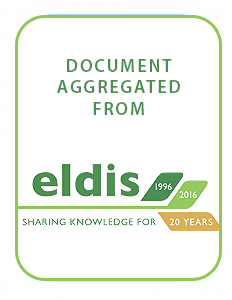Resource information
This paper evaluates the costs and benefits of disaster risk reduction in the context of climate change through an analysis of case studies in India, Nepal and Pakistan. The paper focuses on water related disasters and the manner in which they may change as a consequence of climate change. The paper highlights that the evidence presenting the economic impacts of climate change and disasters is accumulating rapidly. It is now widely recognized that recurrent disasters represent a major factor in undermining the ability of regions, nations and the global community to meet basic development goals. As a result, there is both a need and a demand for analytical frameworks such as cost benefit analysis that can support decision-making with regard to investments in climate and other disaster risk reduction investments.The methodological approach of the paper has the following key elements:
scoping: an intensive scoping process to identify locations and risks that can form a representative basis for detailed cases
vulnerability and capacity analysis: a systematic process within case study areas, including development of semi-quantitative vulnerability indices, to identify vulnerable groups and the different dimensions of vulnerability
shared learning dialogues within identified case areas: continuous meetings with communities and key actors that allow the movement from the analysis of vulnerability to clear identification of the alternative strategies for disaster risk reduction
systematic qualitative approaches for evaluating trade-offs (broad costs and benefits) between alternative strategies for risk reduction: who benefits, who loses and why?
Cost Benefit Analysis (CBA) using quantitative probabilistic techniques for evaluating the costs and benefits of different approaches to disaster risk reduction. A core economic and hazard-modeling element and includes techniques for evaluating the impacts of climate change in data limited context.
The paper concludes that, the benefits of investing in disaster risk management substantially exceed the costs. In most cases investigated, benefit/cost ratios are positive and in some instances may be well above those achieved through other common development investments. This finding holds true for an array of interventions that range across a spectrum from insurance to early warning and from distributed responses at the village level to large-scale infrastructure. Investing in lower cost forms of risk reduction that are designed to increase the resiliency of livelihoods, housing and other infrastructure at the household and community level may be among the most economically effective avenues for reducing risks and thereby supporting adaptation to climate change.


